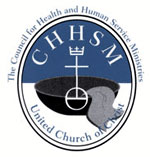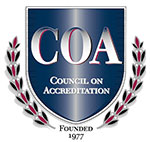PROGRAMS
GET INVOLVED
SUPPORT OUR MISSION

September 15 – October 15 is National Hispanic Heritage Month. Here at Hoyleton Youth & Family Services, one of our points of pride is that we provide services to over 600 individuals plus their families each year in our Puentes de Esperanza program. So, in honor of National Hispanic Heritage Month, we wanted to cover misconceptions that are often misunderstood.
Most of the families we serve in Puentes de Esperanza refer to themselves as Latino instead of Hispanic; that’s because Hispanic derives from the Spanish heritage whereas Latino refers to the Latin American cultures. Although a large majority of our families do speak Spanish, some have a dialect from other areas.
Kʼicheʼ (Quiché) is a Maya language of Guatemala, spoken by the Kʼicheʼ people of the central highlands. Kʼicheʼ is the second-most widely spoken language in the country.
Chatino is a group of indigenous Mesoamerican languages. These languages are natively spoken by individuals whose communities are located in the southern portion of the Mexican state of Oaxaca.
Miztico is from the Mixtec Indian Language and is an Oto-Manguean language of Mexico.
It is important to know the difference between language and dialect. For instance, St. Louis natives say “soda” and Chicago natives say “pop”. Although we are all referring to the same object, we use different verbiage to get the point across. You can go just about anywhere in the United States and different dialect will be spoken depending on the state. Although we are all speaking the same language, we may refer to the same things with different names. This also happens in other countries, which contributes to the difficulty level of moving to a country where they do not speak your primary language.
To put this into perspective, imagine being in a room full of lawyers where all they use is legal jargon; if you yourself aren’t a lawyer, this could be not only confusing – but also a bit intimidating. That is how those who don’t speak fluent English feel on a regular basis, which is why it is so important to be aware and patient with those who are trying their best to learn a new language.
The main objective of Puentes de Esperanza is to establish the goal of self-sufficiency. Due to the language barrier our clients face in living their day-to-day lives, they come to us in a state of desperation seeking help to adequately navigate the system. Then, we are able to provide clients with workshops that will transform them from being isolated from society, to exposing them to positive alternatives. Our workshop topics include: how to open a bank account, how to read and write, how to know what a healthy relationship looks like, etc. “Even if we only have a couple of people that come to our event, we still host them in hopes that they will share all the great information they learned with their friends and family,” said Jovany, Bilingual Family and Community Advocate.
Our goal is to create awareness and help those who are seeking out a better life for them and their family. If you know someone who could benefit from our Puentes de Esperanza program, please give us a call at (618) 688-4727.


